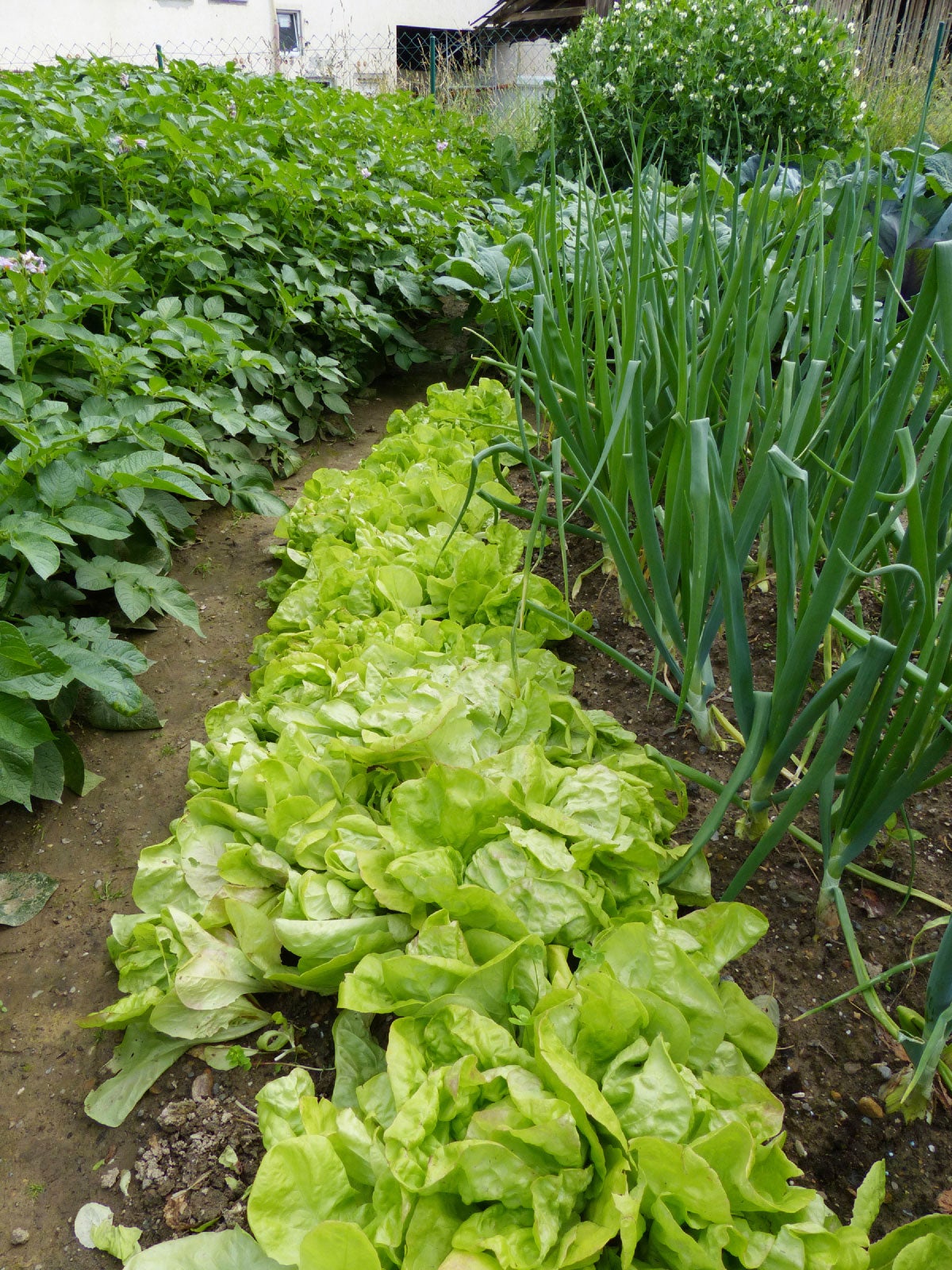Vegetable Intercropping - Information For Interplanting Flowers And Vegetables


Intercropping, or interplanting, is a valuable tool for several reasons. What is interplanting? Interplanting flowers and vegetables is an old-fashioned method that is finding new interest with modern gardeners. It allows the small space gardener to grow many different crops, minimizes open spaces that encourage formation of competitive weeds, enhances soil fertility, and promotes cooperation among different species to enhance the health of all the plants.
What is Interplanting?
This type of gardening takes some planning, but vegetable intercropping can also reduce disease and pests when done in proper combinations. The practice involves pairing taller plants with shorter ones growing under them. It also includes combinations of companion plants, which help repel pests. Intercropping with nitrogen-rich plants, such as beans, allows them to fix nitrogen in the soil and increase the macro-nutrients availability for other plants. Cyclical plantings for consistent harvest are also an important facet of interplanting. No matter what area you focus upon, the basic idea of interplanting and intensive gardening is to create a favorable relationship among all the crops and increase yields and variety.
How to Start Garden Intercropping
Interplanting flowers and vegetables has been done by native people as long as cultivation has been known. Garden intercropping must begin with a study of the types of plants you wish to grow, your topographical challenges, knowledge of plant maturity, and necessary spacing. In a nutshell, you need a plan. You can start with a schematic outlining the plant space, then choose the plants you wish to grow. Read seed packet labels to find out how much space is necessary for each plant and the distance between each one. Then you can choose among several types of planting arrangements.
Vegetable Intercropping Considerations
Once you know the specific requirements of your chosen plants, you can consider their situation in the garden to maximize benefits to each other. Row planting is when you have at least two types of vegetable with at least one in rows. Mixed intercropping is when you plant two crops together with no rows. This would be useful when you have two different sizes of plants such as corn and lettuce. It is also useful for relay planting where you sow a second crop in time to mature after a first crop has produced.
Other Factors for Interplanting and Intensive Gardening
Consider growth rate above and below ground when interplanting flowers and vegetables. Crops that root deeply such as parsnips, carrots, and tomatoes can be intercropped with shallow vegetables such as broccoli, lettuce, and potatoes. Fast growing plants, like spinach, can be tucked in around slow maturing plants like corn. Take advantage of the shading from tall and broad leaf crops and plant lettuce, spinach, or celery underneath. Alternate spring, summer, and fall crops so you can have successive harvests of a variety of foods. Choose companion plants that will repel pests. Classic combos are tomatoes with basil and marigolds with cabbage. Have fun with intercropping and start planning in winter so you can take advantage of all the varieties of crops your zone can grow.
Sign up for the Gardening Know How newsletter today and receive a free copy of our e-book "How to Grow Delicious Tomatoes".

Bonnie Grant is a professional landscaper with a Certification in Urban Gardening. She has been gardening and writing for 15 years. A former professional chef, she has a passion for edible landscaping.